No Products in the Cart
Free 2-3 day USPS Priority Shipping With Orders Over $85
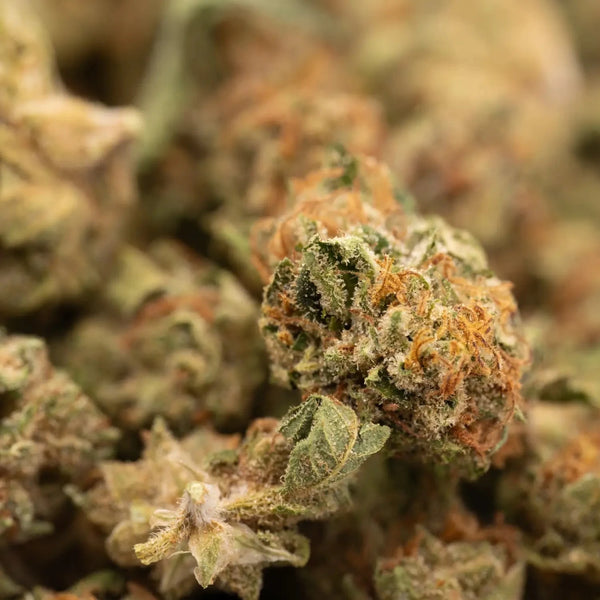
The hemp market has experienced unprecedented growth, and THCA flower has emerged as one of the most sought-after products among cannabis enthusiasts. As consumer interest continues to surge, so does the confusion surrounding quality indicators and what truly defines premium THCA flower. With countless vendors flooding the market and varying quality standards, consumers face the challenging task of distinguishing between mediocre and exceptional products.
The importance of third party THCA testing and established quality standards cannot be overstated. Without proper testing protocols and quality control measures, consumers risk purchasing products that may contain harmful contaminants, inaccurate potency levels, or fail to meet legal compliance requirements. These factors not only affect the overall experience but can also pose serious health and legal risks.
By the end of this comprehensive guide, you'll possess the knowledge and expertise to evaluate THCA flower quality like a seasoned professional. You'll understand exactly what to look for in THCA lab results, how to interpret certificates of analysis, and identify the visual and physical characteristics that separate exceptional products from subpar alternatives. Armed with this information, you'll be able to make informed purchasing decisions and ensure you're getting the highest quality THCA flower available.
THCA (tetrahydrocannabinolic acid) represents the non-psychoactive precursor to THC found in raw cannabis plants. Unlike THC, THCA doesn't produce intoxicating effects until it undergoes decarboxylation through heat application, such as smoking, vaping, or cooking. This unique characteristic makes THCA flower particularly appealing to consumers seeking the potential therapeutic benefits of cannabinoids without immediate psychoactive effects.
The raw cannabinoid potency of high quality THCA flower plays a crucial role in determining its overall value and effectiveness. Higher THCA concentrations typically indicate more mature, properly cultivated plants that have been harvested at optimal times. When evaluating THCA flower potency, consumers should look for products containing 15-30% or higher THCA content, as these levels generally provide the most satisfying experience when decarboxylated.
Health and safety considerations represent paramount concerns when selecting THCA flower products. Without proper THCA flower quality control measures, products may contain dangerous pesticides, heavy metals, microbial contaminants, or residual solvents that can cause serious health complications. These contaminants can accumulate in the human body over time, leading to respiratory issues, organ damage, or other adverse health effects. Quality control testing ensures that products meet strict safety standards and are free from harmful substances.
Legal compliance importance cannot be understated, particularly regarding the federal requirement that hemp products contain less than 0.3% Delta-9 THC on a dry weight basis. THCA flower standards must adhere to this regulation to remain legal under federal law. Products exceeding this threshold risk being classified as marijuana, potentially exposing both vendors and consumers to legal consequences. Proper testing and documentation through THCA certificate of analysis reports ensure compliance with federal and state regulations.
Laboratory testing requirements for THCA flower encompass multiple critical analyses designed to ensure product safety, potency, and legal compliance. These comprehensive testing protocols provide consumers with detailed information about product composition and potential contaminants, enabling informed purchasing decisions.
Cannabinoid profile analysis represents the foundation of THCA testing protocols. This analysis identifies and quantifies all cannabinoids present in the flower, including THCA, THC, CBD, CBG, CBN, and other minor cannabinoids. Accurate cannabinoid profiling helps consumers understand the product's potential effects and ensures compliance with legal requirements.
THCA cannabinoid testing should utilize high-performance liquid chromatography (HPLC) or gas chromatography-mass spectrometry (GC-MS) methods for precise measurements. These analytical techniques provide accurate quantification of individual cannabinoids and can detect even trace amounts of compounds. Quality laboratories will test for at least eight to ten major cannabinoids and provide results as both percentages and milligrams per gram.
Pesticide screening protects consumers from exposure to harmful chemicals used during cultivation. THCA flower safety testing should screen for at least 96 different pesticides, including organochlorines, organophosphates, carbamates, and other commonly used agricultural chemicals. Many states require testing for specific pesticide panels, and reputable laboratories exceed these minimum requirements.
Acceptable pesticide limits vary by compound, but most should be non-detectable or present at extremely low levels measured in parts per billion (ppb). Pesticides like myclobutanil, which can produce hydrogen cyanide when heated, should be completely absent from smokable products. Quality THCA flower will consistently show "not detected" results for the vast majority of pesticides tested.
Heavy metals testing identifies potentially dangerous metallic contaminants that can accumulate in cannabis plants through contaminated soil, water, or nutrients. The "big four" heavy metals of primary concern include lead, cadmium, mercury, and arsenic. THCA lab testing should screen for these elements and provide results in parts per million (ppm) or micrograms per gram (μg/g).
Safe heavy metal limits for smokable cannabis products are typically much lower than for ingestible products due to the increased bioavailability through inhalation. Lead levels should remain below 0.5 ppm, cadmium below 0.2 ppm, mercury below 0.1 ppm, and arsenic below 0.2 ppm for premium THCA flower. These strict limits protect consumers from acute and chronic heavy metal poisoning.
Microbial contamination testing protects consumers from harmful bacteria, yeast, mold, and other microorganisms that can cause serious infections, particularly in immunocompromised individuals. THCA flower testing standards should include screening for total yeast and mold count (TYMC), total aerobic microbial count (TAMC), and specific pathogens like E. coli, Salmonella, and Aspergillus species.
Acceptable microbial limits for cannabis flower typically include TYMC below 10,000 colony-forming units per gram (CFU/g), TAMC below 100,000 CFU/g, and absence of pathogenic microorganisms. Aspergillus species deserve special attention as these molds can produce aflatoxins, which are potent carcinogens. Quality THCA flower quality control programs will consistently produce results well below these maximum allowable limits.
Residual solvents testing ensures that flower hasn't been exposed to harmful chemical solvents during processing or extraction activities. While traditional flower cultivation shouldn't involve solvents, cross-contamination from processing equipment or facilities can introduce these contaminants. Common solvents tested include butane, propane, ethanol, isopropanol, acetone, and methanol.
Most solvents should be non-detectable in flower products, with ethanol being the notable exception due to its use in some post-harvest processing. High quality THCA flower will typically show "not detected" results for all tested solvents, indicating proper handling and processing procedures throughout the supply chain.
Moisture content analysis determines the water activity level in THCA flower, which affects product stability, mold growth potential, and smoking characteristics. Proper moisture levels should range between 6-12%, with 8-10% being optimal for most consumers. Products with moisture levels above 12% face increased risk of mold and bacterial growth, while products below 6% may be overly dry and harsh when consumed.
THCA flower with appropriate moisture content will feel slightly sticky to the touch, break apart cleanly without crumbling, and produce smooth smoke or vapor when consumed. Moisture analysis helps ensure proper curing and storage conditions have been maintained throughout the supply chain.
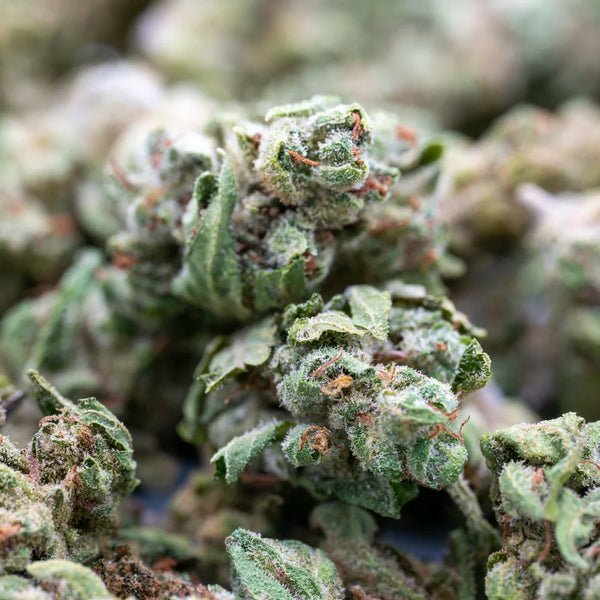
Understanding how to interpret THCA COA results empowers consumers to make informed purchasing decisions based on objective data rather than marketing claims. Good test results demonstrate not only high potency but also clean, safe products that meet or exceed industry standards.
THCA flower potency typically ranges from 15-30% or higher in quality products, with some premium strains achieving THCA levels exceeding 35%. These high potency levels indicate mature plants that were harvested at optimal times and properly cured to preserve cannabinoid content. However, potency alone doesn't determine quality – the complete cannabinoid profile and absence of contaminants are equally important factors.
When evaluating potency results, consumers should also consider the total cannabinoid content, which includes THCA, THC, CBD, CBG, and other minor cannabinoids. Total cannabinoid levels of 18-35% or higher generally indicate high-quality flower with well-developed trichomes and proper cultivation techniques. The ratio between different cannabinoids can also provide insights into the strain's potential effects and characteristics.
Acceptable contamination limits for premium THCA flower should meet or exceed the strictest state regulations. For pesticides, the majority of compounds should show "not detected" results, with any detected levels well below maximum allowable limits. Heavy metals should consistently fall below the safety thresholds mentioned previously, with many quality products showing non-detectable levels for most metals.
Microbial contamination results should demonstrate low colony counts and absence of pathogenic organisms. Quality THCA flower will typically show TYMC counts below 1,000 CFU/g and TAMC counts below 10,000 CFU/g – significantly lower than maximum allowable limits. These low contamination levels indicate proper cultivation, handling, and storage practices throughout the production process.
A complete cannabinoid spectrum provides valuable information about the flower's potential effects and authenticity. THCA lab results should include quantification of major cannabinoids including THCA, Delta-9 THC, CBD, CBG, CBN, CBC, and THCV at minimum. Quality laboratories may test for additional minor cannabinoids and provide more comprehensive profiles.
The presence of multiple cannabinoids in appropriate ratios suggests authentic, naturally-grown cannabis rather than hemp flower that has been artificially enhanced or treated with synthetic cannabinoids. Natural THCA flower will typically show trace amounts of other cannabinoids even when THCA dominates the profile, creating the entourage effect that many consumers seek.
While laboratory testing provides objective data about THCA flower quality, visual and physical inspection techniques allow consumers to assess products before purchasing and verify that laboratory results align with actual product characteristics. Developing skills in visual inspection helps consumers identify quality indicators and potential red flags.
Trichome coverage and color represent primary visual indicators of high quality THCA flower. Trichomes are the small, crystal-like structures that contain the majority of cannabinoids and terpenes. Quality flower should display dense trichome coverage that appears frosty or sugary, with trichomes ranging from clear to milky white in color. Amber-colored trichomes may indicate older product or flower that was harvested slightly past peak ripeness.
Bud structure and density provide insights into cultivation quality and proper curing. Well-grown THCA flower should have well-formed, compact buds with visible calyxes and minimal leaf material. The flowers should feel dense but not overly compressed, indicating proper development and curing without excessive mechanical processing. Loose, airy buds may suggest inadequate lighting during cultivation or premature harvesting.
Color variations in quality THCA flower typically include vibrant greens as the base color, with potential purple, blue, or pink hues depending on the strain's genetics and growing conditions. Orange, red, or brown pistils (hairs) are normal and often indicate proper maturation. The overall color should appear natural and vibrant rather than dull or artificially enhanced.
The absence of mold, pests, or seeds represents fundamental quality requirements for premium THCA flower. Any visible mold, spider webs, insect damage, or seeds immediately disqualifies a product as high-quality. Seeds indicate that the plants were pollinated, which reduces cannabinoid production as the plant's energy goes toward seed development rather than resin production.
Proper cure and moisture levels can be assessed through tactile examination. Quality THCA flower should feel slightly sticky but not wet, break apart cleanly without turning to powder, and spring back slightly when lightly compressed. The stem should snap rather than bend, indicating appropriate moisture levels and proper curing.
Brown or dark spots on flower buds often indicate mold, mildew, or rot, which can pose serious health risks and indicates poor storage conditions. These discolored areas should be completely avoided, as they may contain harmful microorganisms that could cause respiratory infections or other health issues.
Excessive stems and leaf material reduce the overall value of THCA flower products and may indicate poor trimming practices or attempts to increase product weight artificially. Quality flower should consist primarily of bud material with minimal stem and leaf content, maximizing the concentration of desired compounds.
Harsh, chemical odors can indicate the presence of residual pesticides, solvents, or other contaminants that weren't properly removed during cultivation or processing. High quality THCA flower should have a pleasant, natural aroma that reflects the strain's terpene profile without any artificial or chemical undertones.
Brittle or overly dry texture suggests improper curing, excessive age, or poor storage conditions. Flower that crumbles to dust when handled has likely lost significant terpene content and may provide a harsh, unpleasant consumption experience. Conversely, flower that feels too moist or spongy may harbor microbial contaminants.
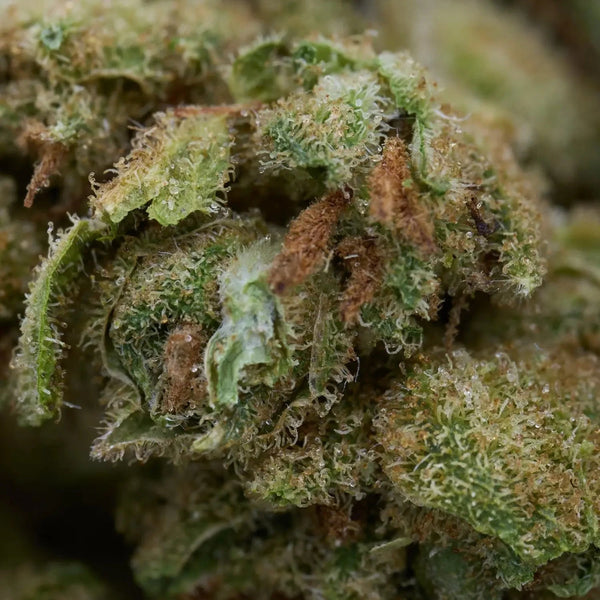
Developing systematic THCA quality indicators inspection techniques enables consumers to consistently evaluate products and make informed purchasing decisions. These techniques complement laboratory testing results and provide immediate feedback about product quality.
Begin visual inspection under adequate lighting conditions, preferably natural daylight or full-spectrum LED lighting that reveals true colors and details. Examine the overall appearance for uniformity, color consistency, and general cleanliness. Quality THCA flower should have consistent appearance throughout the package without significant variations in color, trichome coverage, or bud structure.
Use a magnifying glass or jeweler's loupe to examine trichome structure and density closely. Look for intact, well-formed trichome heads that appear clear to milky white in color. Broken or missing trichome heads may indicate rough handling during processing or packaging, which can reduce potency and overall quality.
Proper aroma assessment provides valuable insights into terpene preservation and overall product freshness. Premium THCA flower should exhibit rich, complex aromas that reflect the strain's terpene profile. Common terpene aromas include citrus, pine, floral, earthy, or fuel-like scents, depending on the specific cultivar.
Fresh, properly cured flower will release more pronounced aromas when buds are broken apart, indicating well-preserved terpene content. Musty, hay-like, or absent aromas may suggest poor curing, excessive age, or improper storage conditions that have degraded the terpene profile.
Evaluate the physical texture through gentle manipulation of the flower buds. Quality THCA flower should feel dense and well-formed while still allowing for easy separation of individual buds. The texture should be slightly sticky from trichome resin but not wet or spongy.
Test the stem flexibility by bending small stems within the buds. Properly cured flower will have stems that snap cleanly rather than bending or feeling rubbery. This snap test indicates appropriate moisture content and successful curing processes that remove excess chlorophyll and other undesirable compounds.
Selecting reputable suppliers represents a crucial factor in obtaining consistently high quality THCA flower. The vendor's reputation, testing protocols, and transparency directly impact the quality and safety of products available to consumers.
Reputable suppliers invest in comprehensive THCA flower quality control programs that extend beyond minimum regulatory requirements. These vendors typically maintain relationships with accredited laboratories, implement strict storage and handling protocols, and prioritize customer safety over profit margins. They understand that their long-term success depends on consistently providing safe, high-quality products that meet customer expectations.
Established vendors also maintain detailed batch tracking systems that allow for quick identification and removal of problematic products if quality issues arise. This traceability provides additional consumer protection and demonstrates the vendor's commitment to accountability and quality assurance.
When evaluating potential suppliers, consumers should ask specific questions about testing protocols and quality assurance measures. Key questions include: What laboratory conducts your testing? How frequently do you test products? Do you test every batch or only periodic samples? Can you provide current THCA certificate of analysis reports for the specific batch I'm purchasing?
Additionally, inquire about storage conditions, product freshness, and rotation policies. Quality vendors will happily provide detailed information about their quality control measures and should readily share current COA reports for all products. Vendors who are evasive about testing or quality measures should be avoided.
THCA COA verification represents an essential skill for informed consumers. Legitimate COAs should include the laboratory's contact information, testing dates, batch or lot numbers, and detailed methodology information. The document should be printed on official laboratory letterhead and include the laboratory's accreditation information.
Verify that the batch number on the COA matches the batch number on the product packaging, and ensure that testing dates are recent (typically within 6-12 months for flower products). Be suspicious of COAs that lack specific batch information, show testing dates significantly older than product packaging dates, or appear to be generic documents used across multiple products.
Comprehensive batch tracking systems enable consumers to trace their THCA flower from cultivation through processing and packaging. Quality vendors maintain detailed records of cultivation practices, harvest dates, processing methods, and storage conditions for each batch. This transparency allows consumers to make informed decisions and helps ensure consistent quality across purchases.
Transparent vendors willingly share information about their cultivation partners, processing facilities, and quality control measures. They understand that educated consumers make better customers and that transparency builds trust and loyalty over time.
Customer reviews and industry reputation provide valuable insights into vendor reliability and product quality. Look for consistent positive feedback regarding product quality, customer service, and accurate product descriptions. Pay particular attention to reviews that mention laboratory testing results, product freshness, and overall satisfaction with premium THCA flower purchases.
Industry reputation can be assessed through trade publications, industry associations, and professional networks. Vendors who actively participate in industry events, maintain professional certifications, and contribute to industry discussions typically demonstrate higher levels of professionalism and commitment to quality.
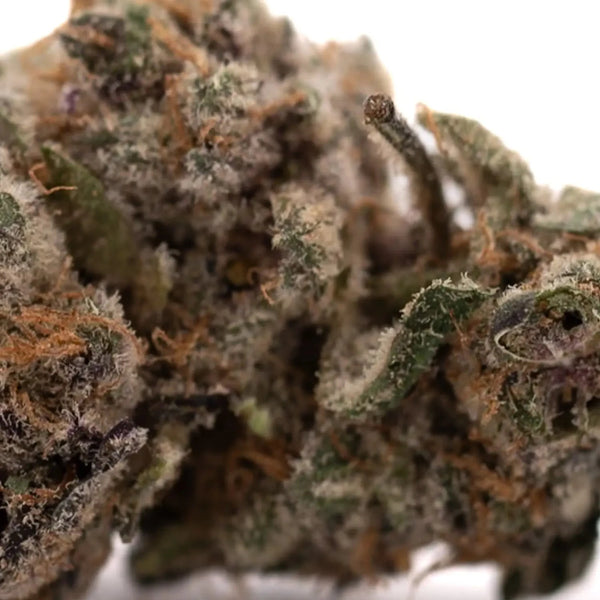
Laboratory accreditation and standardized testing methodologies ensure the accuracy and reliability of THCA testing results. Understanding these standards helps consumers evaluate the credibility of COA reports and make informed decisions about product quality.
ISO/IEC 17025 represents the international standard for testing and calibration laboratories. Laboratories with this accreditation have demonstrated technical competence and adherence to strict quality management systems. When evaluating THCA lab results, consumers should prioritize products tested by ISO/IEC 17025 accredited facilities.
This accreditation ensures that laboratories maintain proper equipment calibration, staff training, quality control measures, and proficiency testing programs. Accredited laboratories undergo regular audits and must demonstrate continued compliance with international standards.
Many states have implemented specific testing requirements for cannabis and hemp products that exceed federal guidelines. These state-specific standards often include expanded pesticide panels, lower contamination limits, and additional safety testing requirements. THCA flower testing standards that comply with the most stringent state requirements typically provide superior consumer protection.
Understanding the testing requirements in your state helps consumers evaluate whether vendors meet or exceed local standards. Products that consistently pass testing in states with strict requirements like California, Colorado, or Oregon typically represent higher quality options.
Proper chain of custody procedures ensure the integrity of samples from collection through testing and reporting. These procedures document every person who handles samples, storage conditions, and any transfers between parties. Quality THCA flower quality control programs maintain detailed chain of custody documentation to prevent sample tampering or mix-ups.
Consumers should verify that COA reports reference proper chain of custody procedures and include sample collection dates, handling information, and storage conditions. This documentation provides confidence that test results accurately reflect the specific product batch being evaluated.
Beyond basic visual inspection and COA review, advanced quality assessment techniques provide additional insights into THCA flower quality and value. These techniques require more specialized knowledge but can help consumers identify exceptional products and avoid inferior options.
Terpene profiles significantly impact the aroma, flavor, and potential effects of THCA flower. Quality products should include detailed terpene analysis in their COA reports, showing the concentration of major terpenes like myrcene, limonene, pinene, linalool, and caryophyllene. Total terpene content above 1-2% typically indicates well-preserved, flavorful products.
Understanding common terpene profiles helps consumers select products that match their preferences and desired effects. For example, myrcene-dominant strains tend to produce more sedating effects, while limonene-rich varieties may provide uplifting, energizing experiences.
Water activity (aw) testing measures the available moisture in THCA flower products, which directly affects microbial growth potential and product stability. Optimal water activity levels for cannabis flower range from 0.55-0.65 aw, providing the ideal balance between moisture retention and microbial prevention.
Products with water activity levels above 0.65 aw face increased risk of mold and bacterial growth, while levels below 0.55 aw may result in overly dry, harsh products with reduced terpene content. Quality vendors increasingly include water activity testing in their quality control programs.
Genetic authentication testing verifies the strain identity and genetic consistency of premium THCA flower products. This advanced testing can identify mislabeled products, genetic contamination, or inconsistencies between advertised and actual strain characteristics.
While not yet widespread, genetic testing represents an emerging quality assurance tool that helps ensure consumers receive authentic, properly labeled products. This testing becomes increasingly important as the market grows and strain authenticity becomes a differentiating factor.
Proper storage and handling practices preserve THCA flower quality after purchase and prevent degradation of cannabinoids, terpenes, and overall product integrity. Understanding these practices helps consumers maintain product quality and maximize value from their purchases.
Optimal storage conditions for THCA flower include cool temperatures (60-70°F), low humidity (55-62% RH), protection from light exposure, and minimal air circulation. These conditions prevent cannabinoid degradation, terpene loss, and microbial growth while maintaining optimal texture and aroma.
Glass containers with airtight seals provide ideal storage solutions for home consumers. Avoid plastic containers that may contribute unwanted flavors or allow air exchange. Store containers in cool, dark locations away from heat sources, direct sunlight, and temperature fluctuations.
Proper handling techniques preserve trichome integrity and prevent contamination of high quality THCA flower. Use clean hands or tools when handling products to prevent introduction of bacteria or other contaminants. Minimize excessive handling that can damage delicate trichome structures and reduce potency.
When breaking apart flower for consumption, use gentle techniques that preserve trichome heads and prevent excessive mechanical damage. Quality flower should break apart cleanly without requiring excessive force or creating excessive plant debris.
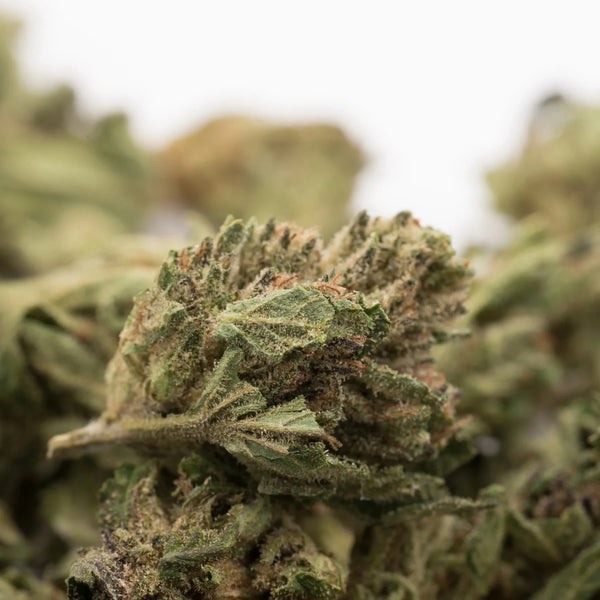
When reviewing THCA lab results, look for comprehensive cannabinoid profiles showing THCA content of 15% or higher, complete absence or very low levels of pesticides and heavy metals, microbial counts well below maximum limits, and recent testing dates that match batch numbers on product packaging. The COA should come from an accredited laboratory and include detailed methodology information.
Verify COA authenticity by checking that the laboratory name and contact information match official records, batch numbers correspond to your specific product, testing dates are recent and reasonable, and the document includes proper laboratory accreditation information. You can often contact the laboratory directly to confirm test results for specific batch numbers.
Quality THCA flower potency typically ranges from 15-30% or higher, with some premium strains exceeding 35% THCA content. However, potency alone doesn't determine quality – look for complete cannabinoid profiles, proper terpene preservation, and clean safety testing results alongside high THCA levels.
Reputable vendors test THCA flower for every batch or at minimum every few batches, depending on their quality control protocols. Testing should be conducted by accredited third-party laboratories and results should be readily available to consumers. Avoid vendors who cannot provide recent, specific batch testing results.
The most critical safety tests include pesticide screening for at least 96 common agricultural chemicals, heavy metals testing for lead, cadmium, mercury, and arsenic, microbial contamination testing for harmful bacteria and mold, and residual solvents testing. All results should show non-detectable or very low levels of contaminants.
Properly cured THCA flower will have optimal moisture content (8-10%), pleasant natural aromas reflecting the strain's terpene profile, stems that snap rather than bend, and texture that's slightly sticky but not wet. The flower should break apart cleanly and produce smooth smoke or vapor when consumed.
Major red flags include vendors who cannot provide current COA reports, products with visible mold or contamination, harsh chemical odors, overly dry or wet texture, excessive stems or leaf material, unrealistic pricing that seems too good to be true, and lack of proper batch tracking or transparency about cultivation and processing methods.
Third party THCA testing provides independent verification of product quality and safety without potential conflicts of interest. While in-house testing can supplement quality control measures, third-party testing by accredited laboratories offers greater credibility and consumer confidence. Always prioritize products with comprehensive third-party testing.
Understanding THCA flower quality requires a comprehensive approach that combines objective laboratory testing results with visual inspection skills and vendor evaluation techniques. The key quality indicators include comprehensive COA reports showing high THCA potency (15%+ preferred), clean safety testing results with minimal contaminants, proper trichome development and preservation, appropriate moisture content and curing, and transparent vendors who readily provide detailed testing information.
The value of educated purchasing cannot be overstated in today's rapidly evolving hemp market. Consumers who understand testing standards, quality indicators, and vendor evaluation techniques are better positioned to avoid inferior products and identify exceptional premium THCA flower options. This knowledge not only ensures better value for money but also provides crucial safety protection against contaminated or mislabeled products.
Always request and carefully review THCA certificate of analysis reports before making purchasing decisions. Verify that COAs are current, specific to your product batch, and conducted by accredited laboratories. Don't hesitate to contact vendors with questions about their testing protocols or quality assurance measures – reputable suppliers welcome these inquiries and view them as opportunities to demonstrate their commitment to quality.
The THCA flower market will continue evolving as regulations develop and consumer sophistication increases. By applying the knowledge and techniques outlined in this guide, you'll be well-equipped to navigate this market successfully and consistently identify products that meet your quality expectations and safety requirements. Remember that quality comes at a premium, but the investment in properly tested, high-quality THCA flower provides superior value through better effects, safety assurance, and overall satisfaction.
For consumers seeking high quality THCA flower that meets the standards outlined in this guide, explore our carefully curated selection of premium products, all backed by comprehensive third-party testing and transparent quality assurance practices.